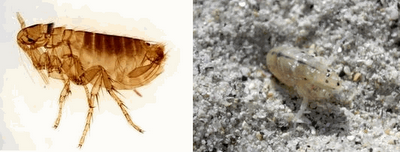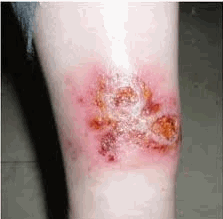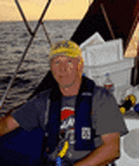What Are Sand Fleas:
The sand flea is a very nasty insect which is difficult to see, as it is only 1/8 of an inch in size but they can jump up to two feet high. They are also called "no-see-ums" and other names. Only the female sand flea will attack mammals/humans, i.e., sup on their blood to feed its evil diet of protein for egg laying purposes
Here is what bites look like:
A sand flea bite is most likely to occur at dawn or in the evening and night time hours on the beach or other sandy areas that are near water. Wetlands, swamplands, creeks, and lake beds are other areas where sand fleas can be found. Sand fleas generally stay close to their breeding ground. They never wander more than 350 feet or about 100 meters from their breeding area.
The fleas will jump onto the feet, ankles, legs, and then bite. They are very persistent and quite annoying. Because of their small size, a sand flea bite occurs before individuals even know any sand fleas were in the area. Like a mosquito, a sand flea bites to suck blood. It is the female sand fly that bites. It does this in order to get the protein from the blood that is necessary for its egg laying. The sand flea bite involves the injection of saliva to thin the blood, making it easier for the flea to take blood from its victim. This same saliva triggers the body's immune system to react.
Despite its size, the bite from a sand flea is quite painful. In fact, most of the time the bite is more painful than one from a typically larger mosquito. In addition to pain, the bite causes a large welt or rashes on the skin that can persist for several days. A fever may also occur. The welts or hives produced from bites are very itchy. Scratching the bitten areas should be avoided in order to prevent the development of an infection. Scratching will also prolong the symptoms of swelling, itch, and skin redness.
Treatment to Minimize Symptoms:
Area should be cleaned frequently with antiseptic soaps and cold water (no warm or hot water). Application of ice packs at the inflamed area for 3-4 times a day will help in reducing swelling and inflammation.
- Benadryl spray to minimize itching
- Calamine solution
- Cortisone cream, antihistamine
- Tea tree oil soaked cotton swabs, 6x per day (best)
- Aloe vera gel will help healing
- Ibuprofen can help
Prevention:
Spray legs and ankles with Deet-based insect repellent, especially in later afternoon and evening hours when they are the most active.
Complications:
Sand flea bites are also known to carry various diseases such as Carrions disease, the Pappataci fever virus, and various parasites that can cause conditions such as Leishmaniasis.
There is a small chance, about 10%, that the sand flea was a protozoan parasite carrier which causes Leishmaniasis. The symptoms from this parasite may become present anywhere from a few months to years after the bites occurred include fever, damage to the spleen and liver, and anemia.
Keep an eye out for any lesions like this:
http://www.cdc.gov/parasites/leishmaniasis/
http://en.wikipedia.org/wiki/Leishmaniasis




 RSS Feed
RSS Feed
